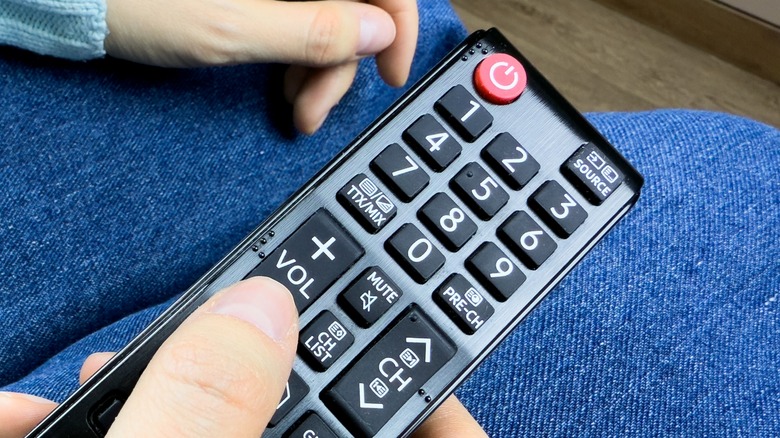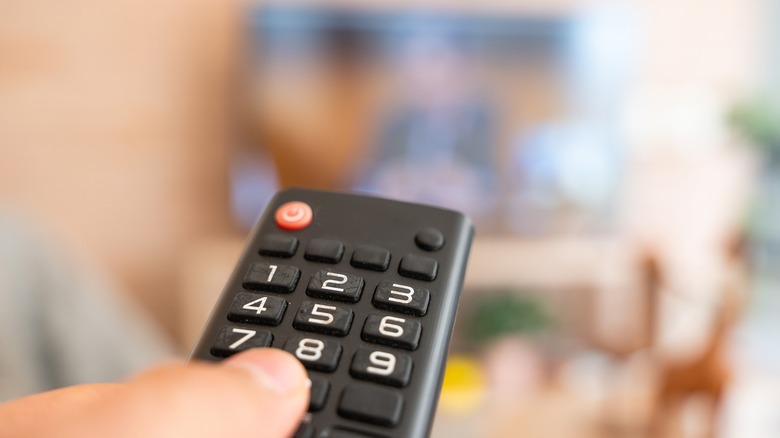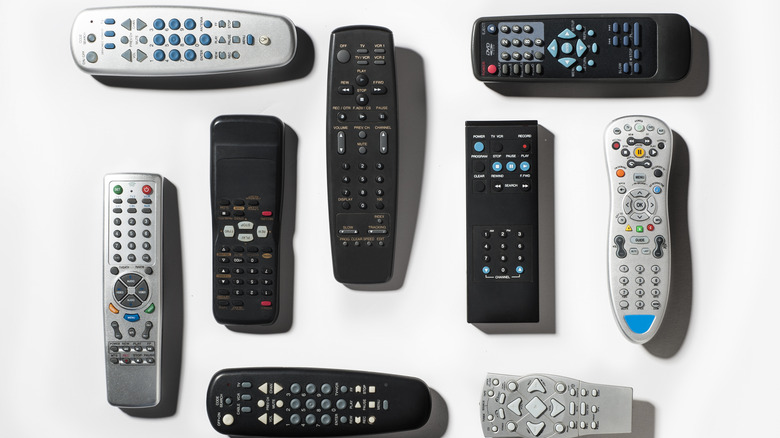Why Do Some TV Remote Buttons Have Dots? Here's What They're For
Your TV remote is probably the number one gadget you hate losing. Without it, watching TV is just so inconvenient. You'd either have to get up from the couch to push the buttons on the back of the TV, or configure your phone as your alternative remote control. Both options can be quite limiting since these controls usually aren't an exact copy of your physical remote.
This means you lose some of the special functionalities of your original remote control. For instance, your TV remote might have app shortcut buttons that open your frequently used apps with just one press, a customizable button for your own shortcuts, and maybe even a scroll wheel to use the remote as a computer mouse pointer.
There's also one other thing that a physical TV remote has that TV back buttons or remote apps don't: tiny dots on/near some of the buttons. Most of the time, you can see this bump on the number 5, and other times, they're on the channel or volume rocker as well. Nope, those little dots aren't there for aesthetics. They actually serve a nifty purpose: help you distinguish the remote buttons and find the right one just by touch.
The idea behind the tactile markers on your TV remote
The small raised dots built into some TV remote controls are called tactile markers, and they have the same purpose as the bumps on the F and J keys on your keyboard. For the most part, the tactile dots are used when there are multiple buttons of the same shape closely sitting next to each other. The manufacturers embed them on one or more of these similarly shaped buttons (like the channel and volume buttons that share the same oval form) to help you make out which is which. This way, you won't have to keep looking down on your hand just to locate the button you want to press — you can easily guide your fingers to the correct one by simply feeling the markers.
These tactile dots can come especially in handy for people with limited vision who can't readily make out the labels on the remote buttons. If you watch in the dark more often than necessary, the tactile dots come to your rescue, so you won't have to go closer to the TV light just to see the buttons. Once you memorized where your tactile markers are, handling your remote control would be easier than ever.
What TV remotes have tactile dots?
With smart TV remotes becoming more minimalist by the minute, you'll notice that not every remote control in the market today has tactile markers. For instance, Siri Remote, Google TV voice remote, Roku TV Remote, and Samsung One Remote don't feature these tiny bumps at all. It's most likely because they only have a few buttons that are relatively far apart and easy to identify.
The TV remotes that do include tactile dots have them in different locations and styles. The standard locations are on the number 5, power button, and volume and channel rockers. Some TV remotes also put dots on other buttons like play and audio on the Sony remote control, home and microphone on the LG Magic Remote, and the directional pad on the Vizio TV Remote XRT140.
In terms of style, you can usually find just a singular tactile dot on the buttons. But in TV remotes like TCL, Hisense, and LG, the power button and volume and channel rockers are marked with two or four tiny bumps forming a pattern. The two dots are simply next to each other on the channel buttons, while the four dots make an upside-down L for the power button and an L for the volume rocker. If you have a universal remote from an unknown brand, it might come with tactile markers too, especially if there are multiple buttons.


